Por favor, use este identificador para citar o enlazar a este item:
http://hdl.handle.net/10261/6816COMPARTIR / EXPORTAR:
 SHARE SHARE
 CORE
BASE CORE
BASE
|
|
| Visualizar otros formatos: MARC | Dublin Core | RDF | ORE | MODS | METS | DIDL | DATACITE | |

| Título: | Owls May Use Faeces and Prey Feathers to Signal Current Reproduction |
Autor: | Penteriani, Vincenzo CSIC ORCID; Delgado, María del Mar CSIC ORCID | Fecha de publicación: | 19-ago-2008 | Editor: | Public Library of Science | Citación: | PLoS ONE 3(8): e3014 | Resumen: | [Background] Many animals communicate by marking focal elements of their home range with different kinds of materials. Visual signaling has been demonstrated to play a previously unrecognized role in the intraspecific communication of eagle owls (Bubo bubo), in both territorial and parent-offspring contexts. Visual signals may play a role in a variety of circumstances in this crepuscular and nocturnal species. [Methodology/Principal Findings] Here, we report that a large amount of extremely visible white faeces and prey feathers appear during the breeding season on posts and plucking sites in proximity to the nest, potentially representing a way for eagle owls to mark their territory. We present descriptive and experimental evidence showing that faeces and prey remains could act as previously unrecognized visual signals in a nocturnal avian predator. This novel signaling behavior could indicate the owls' current reproductive status to potential intruders, such as other territorial owls or non-breeding floaters. Faeces and prey feather markings may also advertise an owl's reproductive status or function in mate-mate communication. [Conclusions/Significance] We speculate that faeces marks and plucking may represent an overlooked but widespread method for communicating current reproduction to conspecifics. Such marking behavior may be common in birds, and we may now be exploring other questions and mechanisms in territoriality. |
Descripción: | 6 pages, 10 (supplementary) figures.-- Supplementary figures: S1. Pictures showing details of eagle owl faecal markings. 2. To increase the conspicuousness of faecal signaling, owls need to mark the most prominent rock surfaces. 3. An example of the spatial distribution of faecal markings within an eagle owl's home range. 4. Temporal pattern of the appearance of defecation and plucking sites, which generally become visible during the pre-laying season, and remain visible up until the fledgling period. 5. Some examples of preferential use of darkest substrates for eagle owl faecal marking. 6. Both faecal marks and plucking sites are located in positions with increased conspicuousness, such as dominant places and the highest points of valley slopes. Some marks also appear at the entrance of the valley in which the nest is located. 7. Examples of faecal marks being refreshed after we experimentally obscured them with spray paint. Generally, the eagle owls returned to re-mark within one to two nights of the experimental covering. In several cases, faeces were scattered at exactly the same position that had been previously marked. 8. Pictures showing the significant contrast between the bright feathers and the dark surface of the plucking site. All the prey species on plucking sites were birds with highly visible feathers. 9. Some faecal marks were only visible from the nest, not the surroundings. In such a context, they could act to signal reproductive status between the male and female of the breeding pair. 10. In the absence of dominant posts, eagle owls use different locations to signal their breeding status, such as trunks, fences, poles and human structures. Faecal marks and plucking sites could also function as visual signals in other avian species, such as the Little Owl, Athene noctua. | URI: | http://hdl.handle.net/10261/6816 | DOI: | 10.1371/journal.pone.0003014 | ISSN: | 1932-6203 (Online) |
| Aparece en las colecciones: | (EBD) Artículos |
Ficheros en este ítem:
| Fichero | Descripción | Tamaño | Formato | |
|---|---|---|---|---|
| owls.pdf | Full-text paper | 96,11 kB | Adobe PDF |  Visualizar/Abrir |
| Fig_S1.pdf | Fig. S1: Patterns of defecation sites and faecal marks | 1,27 MB | Adobe PDF | 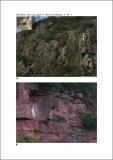 Visualizar/Abrir |
| Fig_S2.pdf | Fig. S2: Owl positions on faecal posts | 276,81 kB | Adobe PDF | 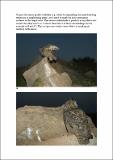 Visualizar/Abrir |
| Fig_S3.pdf | Fig. S3: Spatial distribution of faecal markings | 69,13 kB | Adobe PDF | 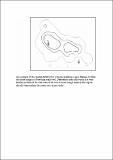 Visualizar/Abrir |
| Fig_S4.pdf | Fig. S4: Temporal pattern of the appearance of defecation sites | 298,33 kB | Adobe PDF | 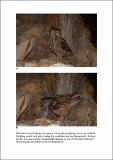 Visualizar/Abrir |
| Fig_S5.pdf | Fig. S5: Patterns of faecal marks on dark substrates | 338,4 kB | Adobe PDF | 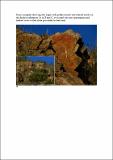 Visualizar/Abrir |
| Fig_S6.pdf | Fig. S6: Marking is done on strategic positions | 5,67 MB | Adobe PDF | 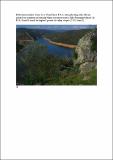 Visualizar/Abrir |
| Fig_S7.pdf | Fig. S7: Refreshing of faecal marks | 866,07 kB | Adobe PDF | 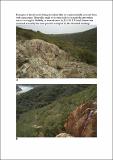 Visualizar/Abrir |
| Fig_S8.pdf | Fig. S8: Features of plucking sites | 576,49 kB | Adobe PDF |  Visualizar/Abrir |
| Fig_S9.pdf | Fig. S9: Faecal marks and mate-mate communication | 233,15 kB | Adobe PDF | 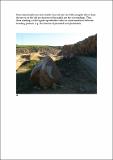 Visualizar/Abrir |
| Fig_S10.pdf | Fig. S10: Additional marking posts and other marking bird species | 279,61 kB | Adobe PDF | 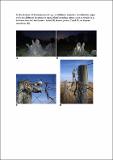 Visualizar/Abrir |
CORE Recommender
PubMed Central
Citations
5
checked on 31-mar-2024
SCOPUSTM
Citations
22
checked on 15-abr-2024
WEB OF SCIENCETM
Citations
21
checked on 25-feb-2024
Page view(s)
340
checked on 17-abr-2024
Download(s)
1.162
checked on 17-abr-2024
Google ScholarTM
Check
Altmetric
Altmetric
Artículos relacionados:
NOTA: Los ítems de Digital.CSIC están protegidos por copyright, con todos los derechos reservados, a menos que se indique lo contrario.
